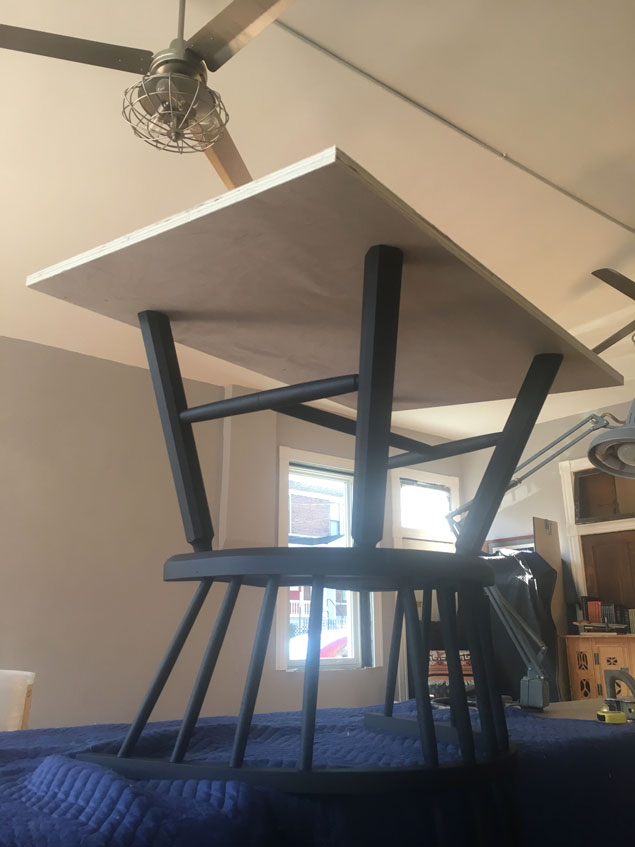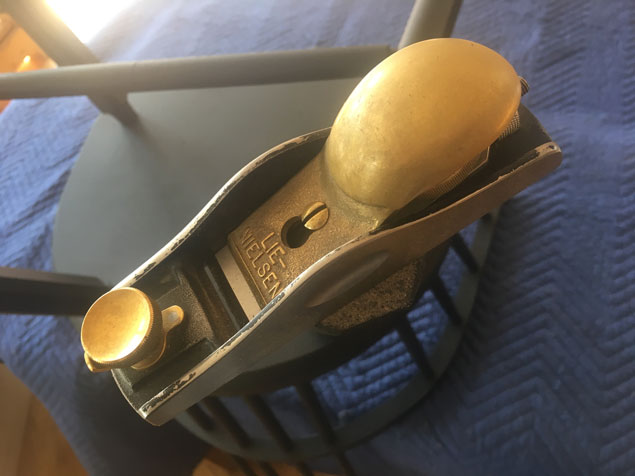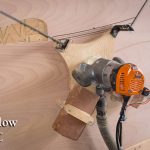We may receive a commission when you use our affiliate links. However, this does not impact our recommendations.
Getting all four feet of a chair or table in the same plane can be a challenge. What makes the task more difficult is that it can be difficult to figure out when you are done with the job of leveling the feet. After all, your shop floor, your workbench or your table saw are unlikely to be truly flat.
What do you do? (Besides buying shag carpet for every room of your customer’s home.)
Here’s how I deal with it. I have a section of plywood that I regularly confirm is flat with the help of a straightedge. After I level the legs of a chair or small table, I flip the project upside down on my workbench and then place the plywood on top of the upturned feet.
If the plywood doesn’t rock on the feet, then I’m done.
But if the plywood does teeter on two of the feet I can easily see the culprits. I remove the plywood and shave down the high feet with a block plane. Then I test the feet again and repeat until all four feet touch the plywood.
Then I can say with confidence: Your chair is rocking because your floor is uneven. Move the chair to another spot and try again.
— Christopher Schwarz
Here are some supplies and tools we find essential in our everyday work around the shop. We may receive a commission from sales referred by our links; however, we have carefully selected these products for their usefulness and quality.












A hint: Cut a hole (1.5″ or so) in your plywood sheet. If you have a proud leg, stick it to the hole and mark the cut line against the surface (scribe by some flat plane iron or an offset chisel).
You could cut a lot of work off your chair building schedule if you just cut one leg completely off. After all, a three legged chair or table will not rock.
Of course, for chairs like the one in the picture, you might have to lean heavy to the opposite side from which you removed the leg, and the chair might fall over a bit, or a lot.
Seriously, does anyone else wonder why every restaurant has four legged tables, since so many of them seem to rock. Some to the point of almost being catapults?
You said: “After I level the legs of a chair or small table, I flip the project upside down on my workbench and then place the plywood on top of the upturned feet.”
What do you mean by “level the legs”? Cut them to the same length?
This reminds me of an excellent chair making video I watched yesterday: https://www.youtube.com/watch?v=Hsd5k8mWdV0
AND, the last time the chair will ever sit on a flat surface!
I do like the simple solutions, can’t get simpler than that. Quick question, how would you minimise them going out of flat later on? As in after a few hundred bums have sat down on it, the legs will push through a bit more and perhaps irregular on each. Would that just be the nature of the chair?
What do you do for floor protection, or do you leave that to your customers?
So simple. Brilliant.
Great suggestion. Chris – clean up that block plane and let it shine as it was meant to.
Bruce
Great idea. Thanks.